2020: Year of the Rat
To celebrate the year of the rat we curated a list of rodent-transmitted diseases. Get a refresher on the guilty rodents, symptoms, transmission, and more.
<br/>
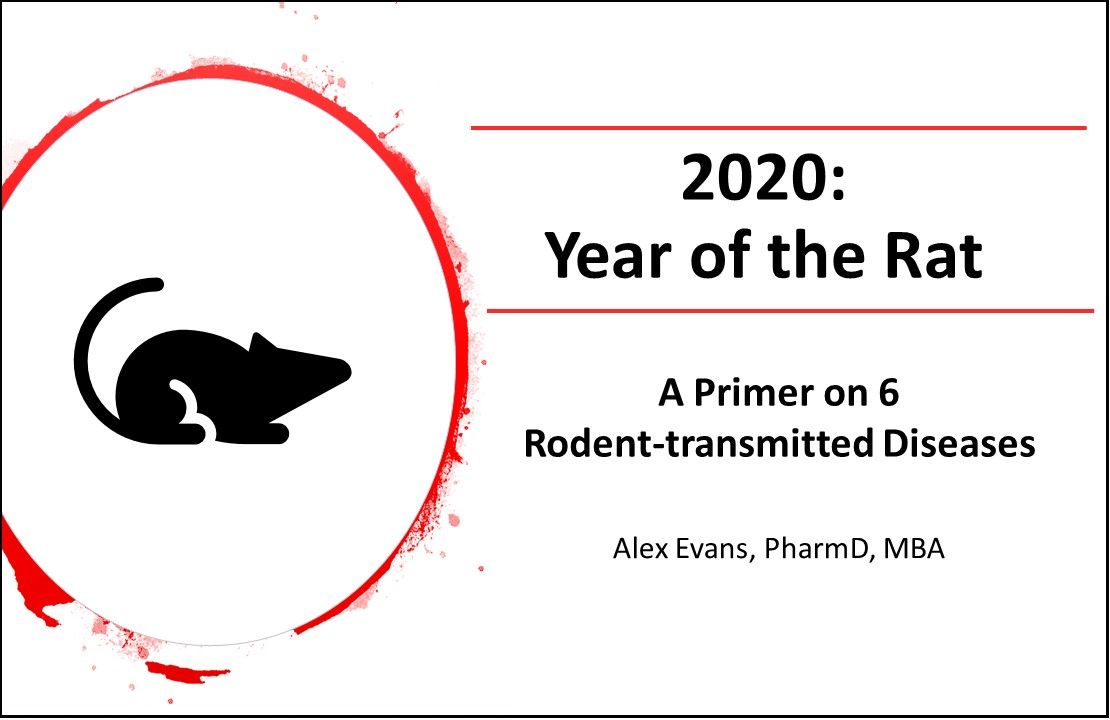
2020 has arrived and to celebrate I wanted to write about something a little different than New Year’s Resolutions. According to the Chinese Zodiac, 2020 is the year of the rat, so to ring in the New Year I’ve curated the finest collection of rodent-transmitted diseases (directly or indirectly) you’ll find anywhere. Most physicians in the US likely don’t see any of these diseases, but it’s good to get a refresher just in case a patient presents with any signs or symptoms.
Now, since I’ll be picking on rats, I must mention that they actually make great pets. I’ve had several pet rats, and when I was in pharmacy school and on a veterinary medicine rotation at the University of Georgia, most of the veterinarians I ran across loved them too. Plus, pet rats (of the species Rattus norvegicus) either can’t cause any of these diseases or they almost never do.
<br/>

Babesiosis.A disease with a global distribution that includes the US, babesiosis is caused by protozoan parasites in the genus Babesia. Like malaria, the Babesia parasite causes rupturing of red blood cells. Initially, patients can present with flu-like symptoms, but in more severe cases it can lead to hemolytic anemia, thrombocytopenia, and disseminated intravascular coagulation. In elderly, asplenic, or immunocompromised patients, it can be fatal.
Babesiosis is transmitted through the bite of a tick that has been infected by deer mice and voles. Even with a blood smear, Babesia can be mistaken for the parasite that causes malaria, Plasmodium, so the CDC recommends having a reference laboratory confirm the diagnosis.
It is difficult to know how many cases there are globally every year because, in malaria-endemic regions, there is likely some amount of misdiagnosis of malaria in babesiosis patients. In the US, there were 7612 cases of babesiosis from 2011-2015, while in Europe it is much rarer, with only 39 reported cases to date.
<br/>
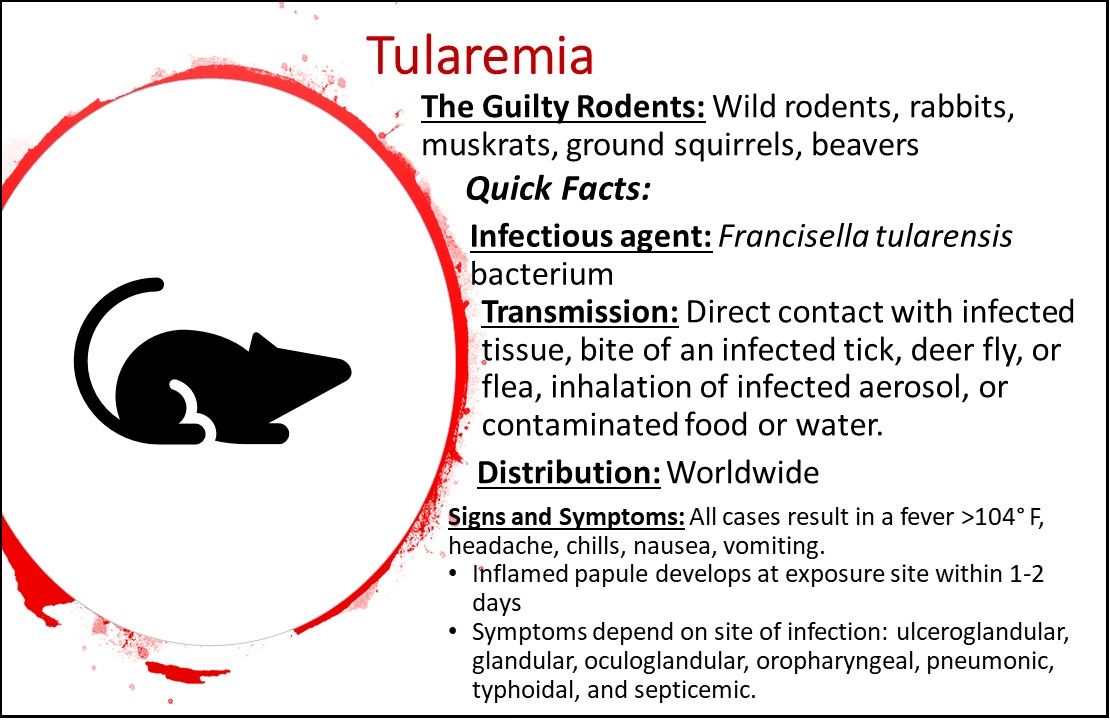
Tularemia. Tularemia is a global disease that hunters often contract while skinning wild rabbits and other animals, but is also transmitted through the bite of a vector or even rarely eating or drinking contaminated food or water. Tularemia is classified by site of infection, with 7 forms of the disease:
- Ulceroglandular
- Glandular
- Oculoglandular
- Oropharyngeal
- Pneumonic
- Typhoidal
- Septicemic
Symptoms vary but typically relate to exposure site. For example, pneumonic tularemia leads to pulmonary infiltrates, sometimes with effusion, while oculoglandular tularemia leads to conjunctivitis. Confirmation can be done through culture of blood, sputum, or other infected fluid. The lab should be notified that tularemia is suspected because it is highly infectious and should ideally be handled in a biosafety level 3 laboratory. In fact, tularemia can cause infection with as few as 10 aerosolized bacteria. Mortality rates vary widely depending on the type of tularemia, with rates as high as 33% of untreated cases in pneumonic, septicemic, and typhoidal tularemia.
<br/>
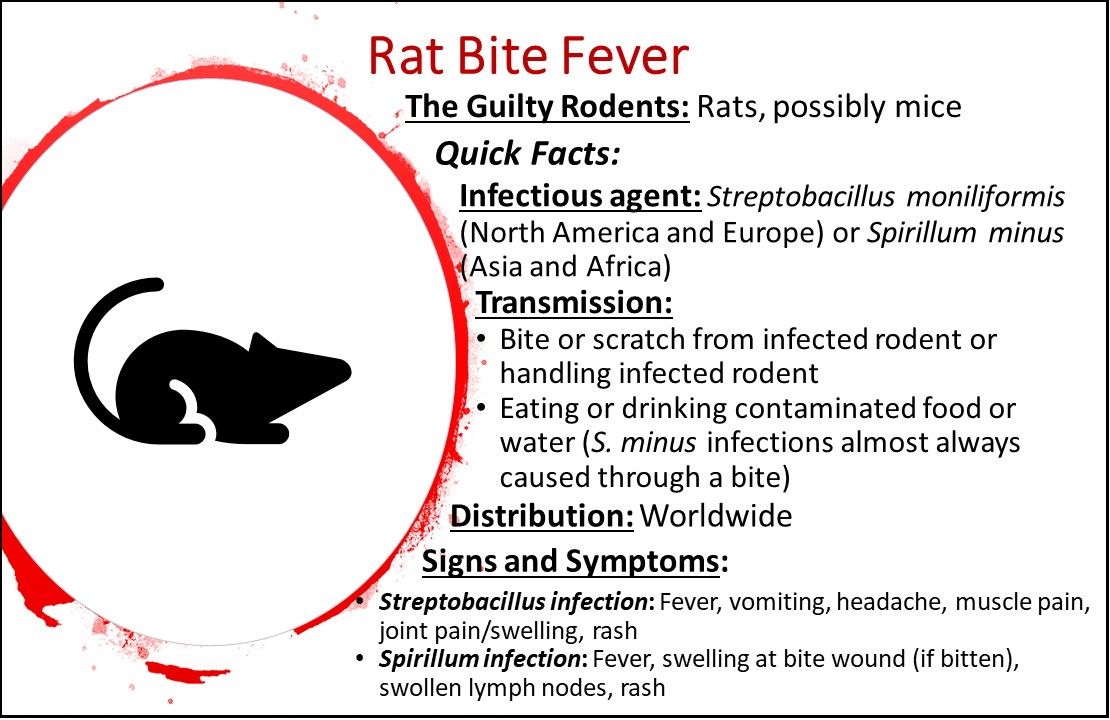
Rat Bite Fever (RBF). RBF is a global disease caused by 2 different bacteria: Streptobacillus moniliformis (streptobacillary RPF) and Spirillum minus (spirillary RBF, aka sodoku). The eponymous fever can be caused by:
- A bite or scratch from an infected rodent
- Handling an infected rodent or through contact with their saliva, urine, or droppings
- Contact with contaminated surfaces where the bacteria can enter the body through open skin
- Consuming food or drinks that are contaminated with droppings or urine from infected rodent (Haverhill fever)
In streptobacillary RBF, the onset of symptoms is usually around 3-10 days but can take up to 3 weeks. Symptoms are rather non-specific and include fever, vomiting, headache, muscle pain, and in some cases joint pain/swelling and/or a rash. Streptobacillary RBF can lead to numerous complications, including pneumonia, nephritis, meningitis, and endocarditis; unfortunately the disease is fatal in about 10% of cases. If streptobacillary RBF is suspected, confirmation can be done through blood or synovial fluid culture.
In spirillary RBF, symptoms begin around 7-21 days after exposure. Joint pain is rare, which helps to differentiate it from streptobacillary RBF. Symptoms include fever, swelling at the bite site (bites from streptobacillary RBF typically heal quickly), lymphadenopathy, and rash.
<br/>
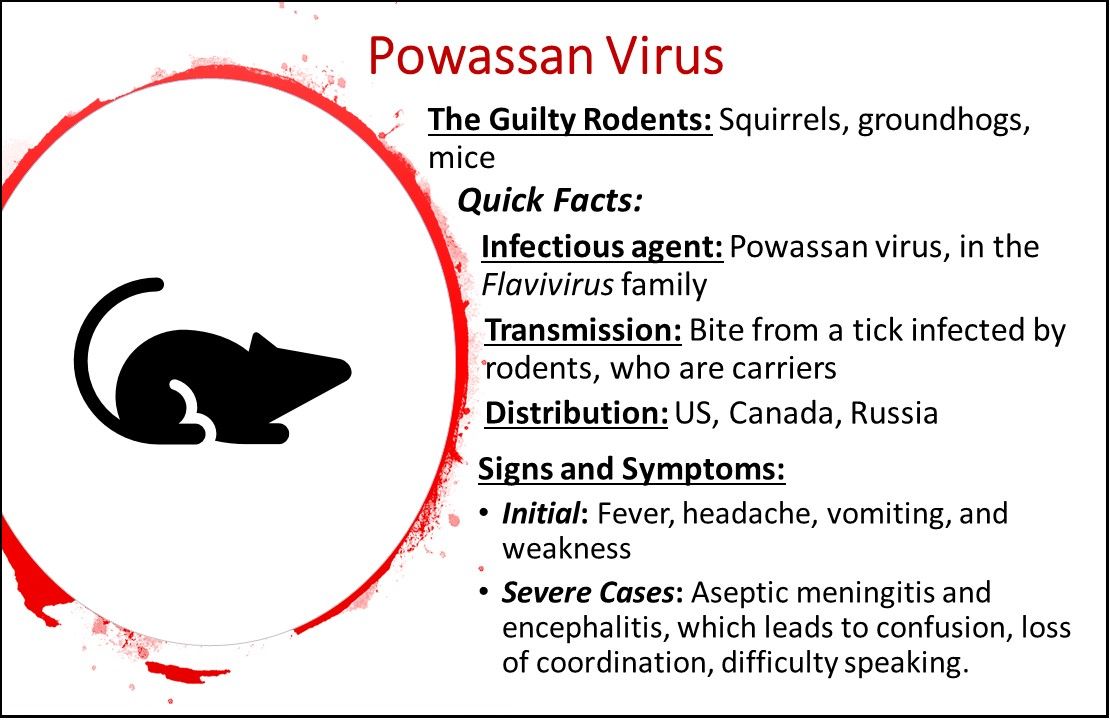
Powassan. Powassan virus hits closer to home than most of the other diseases described in this article as it has been found in the US, Canada, and Russia. As of the most recent US data, 14 states were affected between 2009-2018 and there were 21 cases reported in 2018 alone. It is spread through the bite of a tick that has been infected by feeding on groundhogs, squirrels, and other rodents that are carrying the virus. Powassan virus is in the Flavivirus family and was first described after a young boy died in Powassan, Ontario of severe encephalitis caused by the disease.
Initial symptoms are non-specific and include fever, headache, vomiting, and weakness. In more severe cases, Powassan virus can lead to aseptic meningitis and encephalitis, and is characterized by seizures, confusion, loss of coordination, and difficulty speaking. Powassan virus is fatal in about 10% of cases, and of those who do survive, approximately half develop long-term complications.
<br/>
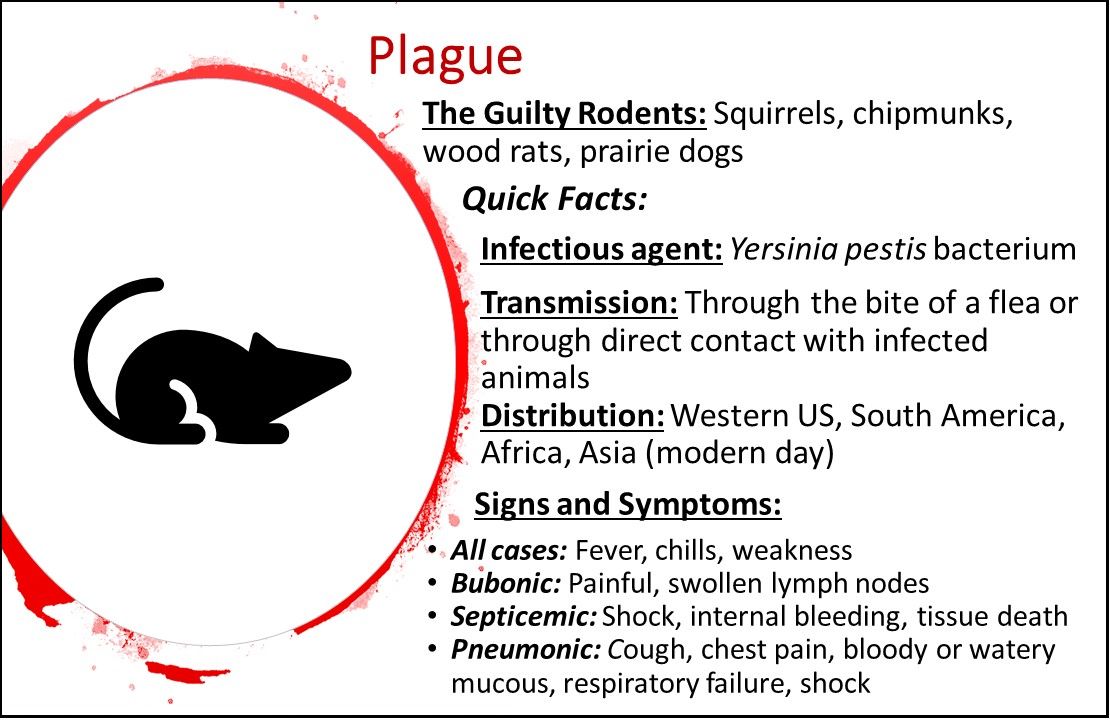
The Plague. No article about rats and disease would be complete without talking about the Plague. Yes, rats have a notch on their belt that includes wiping out 60% of Europe. As healthcare providers, however, we know plague is well and alive, but our patients might not.
Now is also my chance to defend pet rats – the modern day pet rat (Rattus norvegicus) is actually not the species that caused the plague. In fact some researchers now believe rats might not have caused the plague pandemic at all. Plague can be categorized based on clinical features and includes bubonic plague, septicemic plague, and pneumonic plague. In all cases, patients develop fever, chills, and weakness.
Patients can develop painful, swollen lymph nodes (bubonic plague); shock, internal bleeding, and tissue death (septicemic plague); or cough, chest pain, bloody or watery mucous, and respiratory failure and shock as a result of pneumonia (pneumonic plague). Thankfully, nowadays not only is plague treatable, but also rare. Based on the most recent data, there are an average of 7 cases of the plague in the US annually.
<br/>

Lassa Fever. Lassa fever is caused by a virus in the family Arenavirus, which also includes 7 other known viruses that lead to hemorrhagic illness. It is caused by the multimammate rat, which is found in most of sub-Saharan Africa. The disease is endemic in much of West Africa and initially causes non-specific symptoms such as fever, fatigue, and general malaise.
After a few days, symptoms progress to vomiting, diarrhea, cough, nausea, and muscle and abdominal pain, but could progress further to bleeding from the mouth, vagina, or GI track; shock, seizures, and coma. Lassa fever can be fatal, and when it is, death usually occurs within 14 days. An estimated 100 000-300 000 cases occur annually, and around 80% of those infected are asymptomatic. In some areas of West Africa, Lassa fever is such a threat to public health that at least 10% of all hospitalizations are due to the disease.